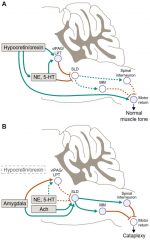
Medical experts have recognized 2 main types of narcolepsy, which are:

Narcolepsy With Cataplexy - Causes, and Symptoms Types of Narcolepsy
#Cataplexy episode full
Abrupt napping (or ‘sleep attacks’) in the daytime besides having a full night’s rest.Sudden muscle function loss while being conscious (cataplexy symptom).Difficulty to stay awake for a longer time.Excess daytime sleepiness and drowsiness.Though the symptoms mentioned in the beginning of the article is common, here are a few more ones that narcolepsy and cataplexy could give rise to altogether: Rarely, narcolepsy is due to genetic defect, which could either be brain tumour or a traumatic injury. The reason is still unknown, however, it is said to be due to an auto-immune reaction, a process where the body’s immunity starts attacking its own cells accidentally.

As said earlier, hypocretin gives rise to wakefulness and when there isn’t enough, an individual can fall asleep. But as far as the studies are concerned, it develops when the hypocretin levels of the brain are low. Overall, the exact cause for narcolepsy is not known. Since narcolepsy is an under-recognized problem, it is vital for general practitioners or any primary healthcare worker to identify unusual daytime sleepiness at an early stage.

The treatment usually involves stimulant drugs that help in suppressing daytime sleepiness, antidepressants to help ease cataplexy, and further, ? hydroxybutyrate to treat both symptoms of narcolepsy & cataplexy. Narcolepsy With Cataplexy - Causes, and Symptoms Many pathophysiological research papers have reported that the condition occurs when there is an early neuron loss in the hypothalamus, which in turn, produces hypocretin, a wakefulness-linked neurotransmitter in the cerebrospinal fluid.Īlso, researchers have stated that the reason for neural loss might be autoimmune because most patients tend to have HLA DQB1*0602 gene that predisposes one to this disorder. But this tends to happen multiple times in a day, irrespective of how much sleep he or she is getting each night. The duration of this sleep can last for a couple of minutes or maybe, even for hours, making him or her feel alert after that. He or she will frequently feel extremely sleepy and tired, with an increased urge to sleep no matter what time of the day is. Yeah, it does happen less efficiently than we do normally but we manage it somehow.īut an individual with narcolepsy disease is different. Although we, at some point, would have felt exhausted and sleepy in the daytime, we recover it by overcoming those feelings and yet carrying out our day-to-day activities. Speaking of narcolepsy in specific, it means excess daytime sleepiness. Surprisingly, it persists throughout their lifetime. However, the development of narcolepsy with cataplexy initially is generally during teenage & young adulthood. Sleep monitoring at night & day shows quick sleep onset followed by shortened rapid-eye-movement (REM) sleep latencies. It’s characterized by irresistible, severe daytime sleepiness along with sudden loss of muscle tone (or cataplexy).

Narcolepsy with cataplexy is a sleep disorder that affects 0.02% of the adults worldwide.


 0 kommentar(er)
0 kommentar(er)
